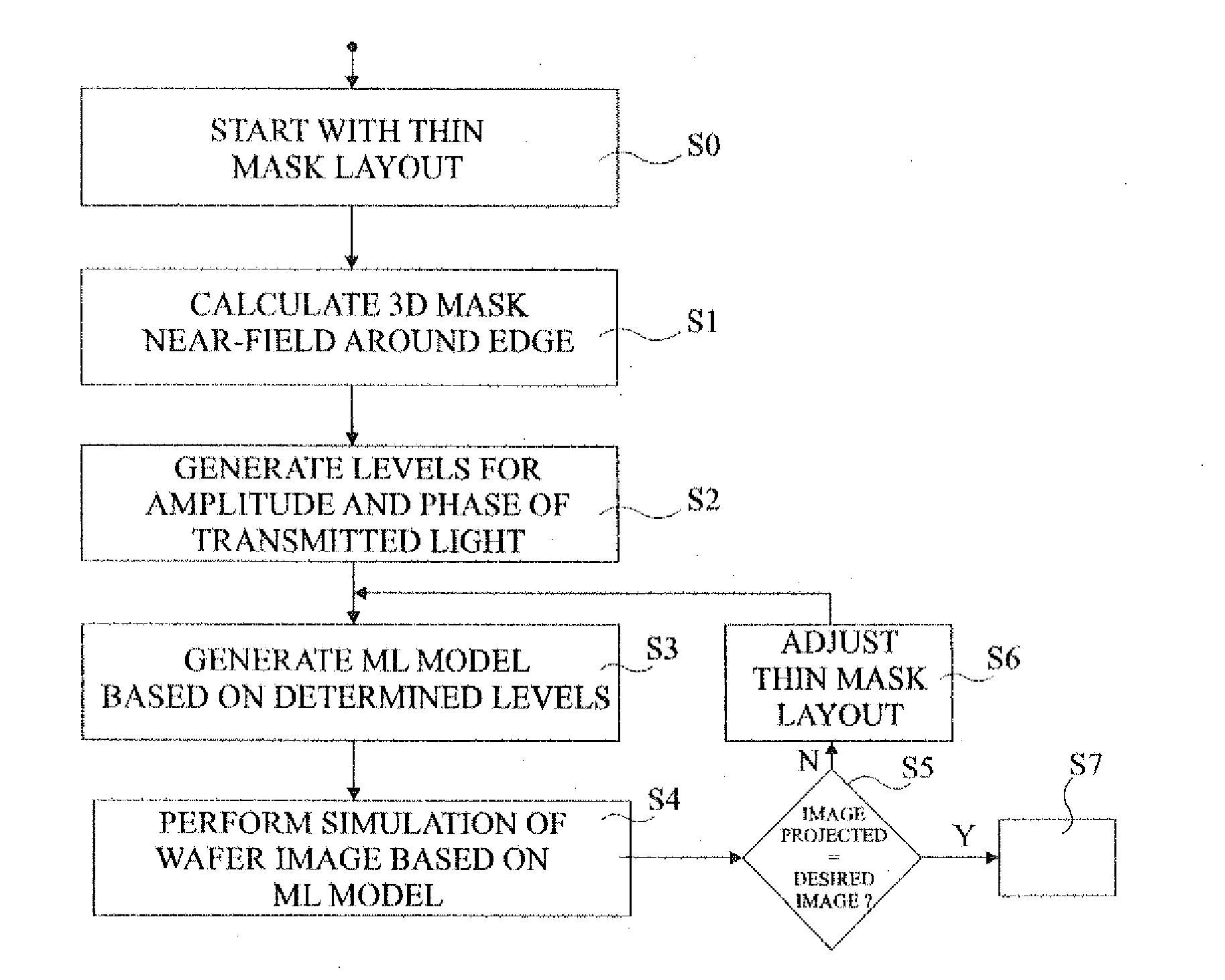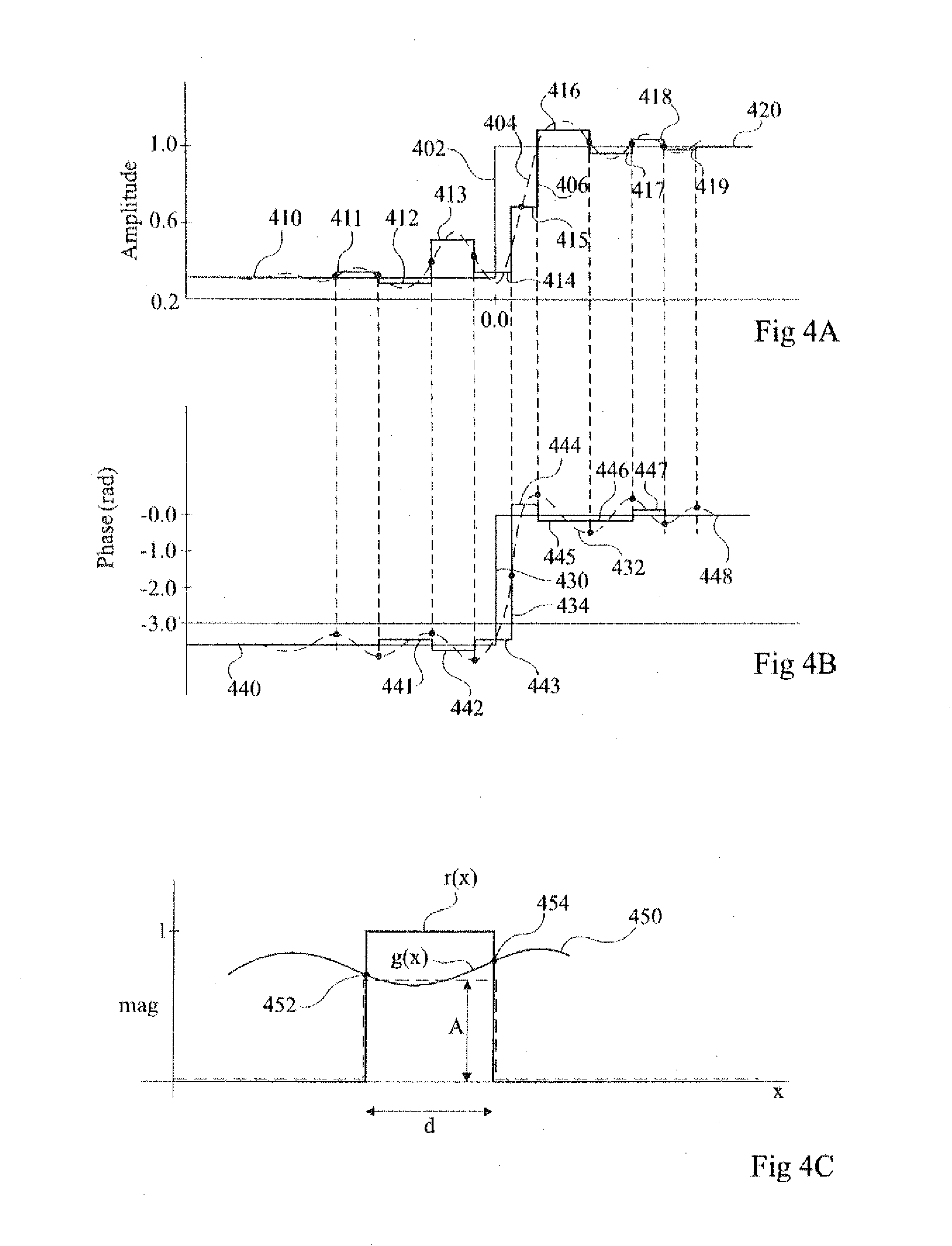Simulation of the image projected by a mask
- Summary
- Abstract
- Description
- Claims
- Application Information
AI Technical Summary
Benefits of technology
Problems solved by technology
Method used
Image
Examples
Embodiment Construction
[0038]FIGS. 4A and 4B show curves of estimations of near-field transmission amplitude and phase respectively resulting from a pattern boundary of the mask at position 0.0 in the middle of the x axis in each figure.
[0039]In FIG. 4A, the curve 402 illustrates a near-field transmission approximation based on the Kirchhoff model, according to which the near-field transmission amplitude corresponds to a step function at the pattern boundary. To the left of the step, the opaque part of the mask is present, and the near-field transmission amplitude is assumed to be at a constant low value, for example around 6%. To the right of the step, the transparent region of the mask is present, and the near-field transmission amplitude is assumed to be at a high value of around 100%.
[0040]The dashed curve 404 illustrates the near-field around the pattern boundary based on a rigorous EMF simulation, based on the actual thickness of the opaque layer of the mask. As illustrated, due to the thickness of ...
PUM
 Login to View More
Login to View More Abstract
Description
Claims
Application Information
 Login to View More
Login to View More - R&D
- Intellectual Property
- Life Sciences
- Materials
- Tech Scout
- Unparalleled Data Quality
- Higher Quality Content
- 60% Fewer Hallucinations
Browse by: Latest US Patents, China's latest patents, Technical Efficacy Thesaurus, Application Domain, Technology Topic, Popular Technical Reports.
© 2025 PatSnap. All rights reserved.Legal|Privacy policy|Modern Slavery Act Transparency Statement|Sitemap|About US| Contact US: help@patsnap.com



